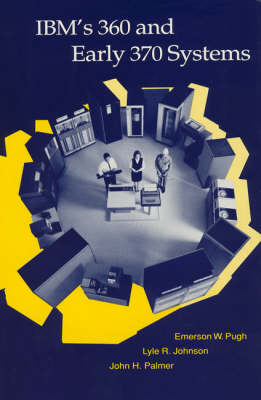History of Computing
4 total works
IBM's 360 and Early 370 Systems
by Emerson W. Pugh, Lyle R. Johnson, and John H. Palmer
Covering the period from about 1960 to 1975, it highlights such important topics as the gamble on hybrid circuits, conception and achievement of a unified product line, memory and storage developments, software support, unique problems at the high end of the line, monolithic integrated circuit developments, and the trend toward terminal-oriented systems.System/360 was developed during the transition from discrete transistors to integrated circuits at the crucial time when the major source of IBM's revenue was changed from punched-card equipment to electronic computer systems. As the authors point out, the key to the system's success was compatibility among its many models. So important was this to customers that System/370 and its successors have remained compatible with System/360. Many companies in fact chose to develop and market their own 360-370 compatible systems. System/360 also spawned an entire industry dedicated to making plug-compatible products for attachment to it.The authors, all affiliated with IBM Research, are coauthors of IBM's Early Computers, a critically acclaimed technical history covering the period before 1960.
Development of ferrite core memory technology during the 1950s was probably the most important innovation that made stored-program computers a commercial reality. IBM's leadership in this development made possible the introduction in 1964 of the IBM System/360, which was so widely copied that it became a standard for electronic stored-program computers that have become so much a part of American life. This book provides a rare and candid glimpse into the innovations as well as the immense risks and imprecisions sometimes involved in technical decision making. It identifies the basic characteristics of technology management that the author believes accounted for IBM's success during this period, and gives a balanced view of the contributions by talented scientists and engineers both within and outside the company. The book chronicles a twenty-five-year period during which IBM evolved from the position of leading supplier of electromechanical punched-card equipment to dominance in the field of electronic computers. It describes IBM's response to the postwar challenge of electronics, its highly successful cooperative effort with MIT on an automated air defense system, the introduction of commercial ferrite core memories, developments and decisions leading to System/360, and the manufacturing problems posed by System/360's success.
An internationally recognized leader in magnetics and computer memory technologies, Emerson W. Pugh is a member of the research staff at the IBM Thomas J. Watson Research Center in Yorktown Heights and author of the widely used text, Principles of Electricity and Magnetism. This book is included in The MIT Press Series in the History of Computing, edited by I. Bernard Cohen and William Asprey.
Watson, who was hired in 1914 to manage the merged companies, exhibited remarkable technological insight and leadership -- in addition to his widely heralded salesmanship -- to build Hollerith's business into a virtual monopoly of the rapidly growing punched-card equipment business.The fascinating inside story of the transfer of authority from the senior Watson to his older son, Thomas J. Watson Jr., and the company's rapid domination of the computer industry occupy the latter half of the book. In two final chapters, Pugh examines conditions and events of the 1970s and 1980s and identifies the underlying causes of the severe probems IBM experienced in the 1990s.



